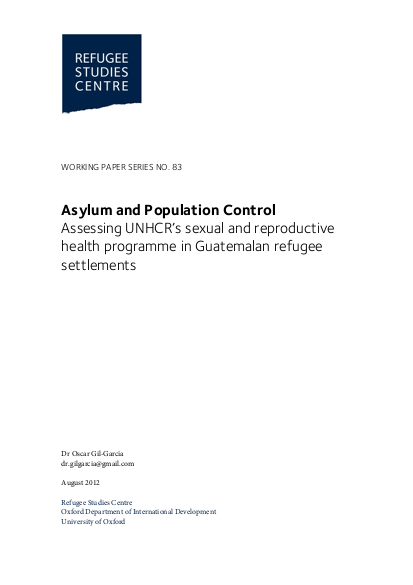
This paper is divided into three sections. The first section provides some historical
background to the military conflict in Guatemala, the impact on indigenous communities,
their exodus, resettlement and reception in Mexico. A review of the methodology used in the
selection of participants in the community of La Gloria is complemented by demographic
information and ethnic composition of these borderland communities.With attention to
gender inequalities, the second section examines UNHCR’s free reproductive health
programme in Guatemalan refugee settlement camps. I explore how discourses of
reproductive health are placed by UNHCR within a gender equality framework that informs
how UNHCR targets women as appropriate recipients of reproductive health interventions.
The third section focuses on the experiences of Juanita and Angelina, the oldest mid-wives in
La Gloria, and their unique contribution in cultivating local health practices and dismantling
gender hierarchy among Guatemalan forced migrants in Mexico. A review of the literature
that documents multilateral humanitarian and state institutional support to mid-wives –
identified as a first line of defence in reproductive health systems infrastructure – will reveal
ongoing marginalisation to medicalised forms of care. I conclude with a brief commentary on
how reproductive health programmes in forced migrant communities can be improved to
promote substantive gender equality, and argue that institutionally driven development
approaches that focus only on reproductive health as a panacea miss the mark in addressing
underlying sources of gender inequality in forced migrant communities.